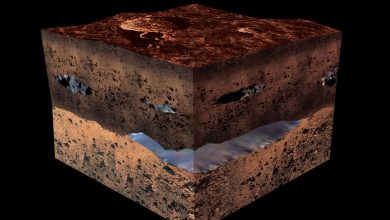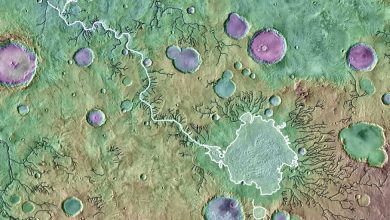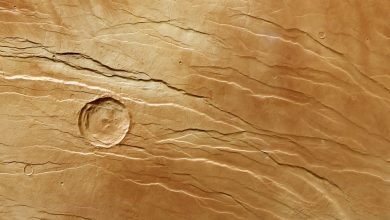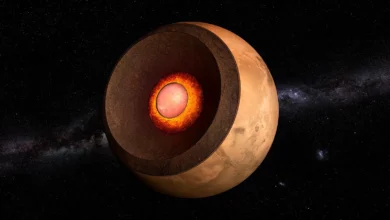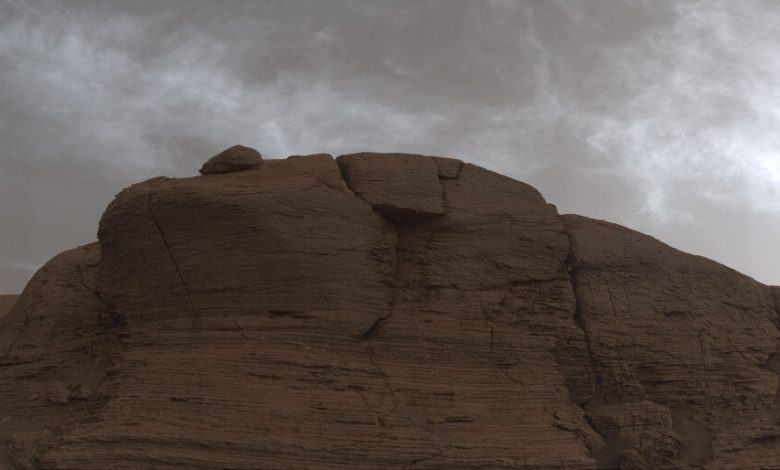
It might look like a postcard from Arizona, but this snapshot shows something much more exotic: the planet Mars, as seen by NASA’s Curiosity rover.
The image is a combination of 21 individual photographs the rover took recently to study a strange type of wispy cloud over its Gale Crater home. Scientists realized two Earth years ago that the cloud type was forming earlier in the Martian year than they expected. So this Martian year, Curiosity was watching for the early clouds, and it was not disappointed. The clouds did indeed show up beginning in late January, when the robotic skywatcher began documenting the wispy, ice-rich clouds scattering sunlight in sometimes colourful displays.
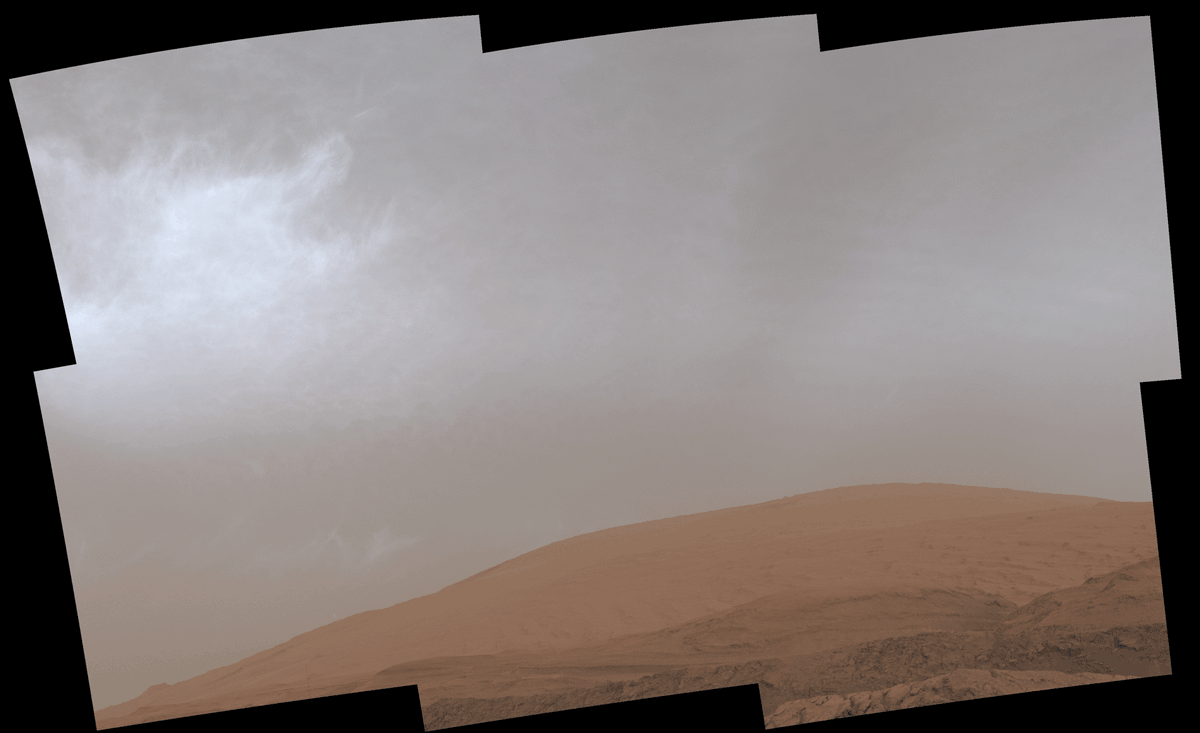
This year, they were ready to start documenting these “early” clouds from the moment they first appeared in late January. What resulted are images of wispy puffs filled with ice crystals that scattered light from the setting Sun, some of them shimmering with color. More than just spectacular displays, such images help scientists understand how clouds form on Mars and why these recent ones are different.
In fact, Curiosity’s team has already made one new discovery: The early-arrival clouds are actually at higher altitudes than is typical. Most Martian clouds hover no more than about 37 miles (60 kilometers) in the sky and are composed of water ice. But the clouds Curiosity has imaged are at a higher altitude, where it’s very cold, indicating that they are likely made of frozen carbon dioxide, or dry ice. Scientists look for subtle clues to establish a cloud’s altitude, and it will take more analysis to say for sure which of Curiosity’s recent images show water-ice clouds and which show dry-ice ones.
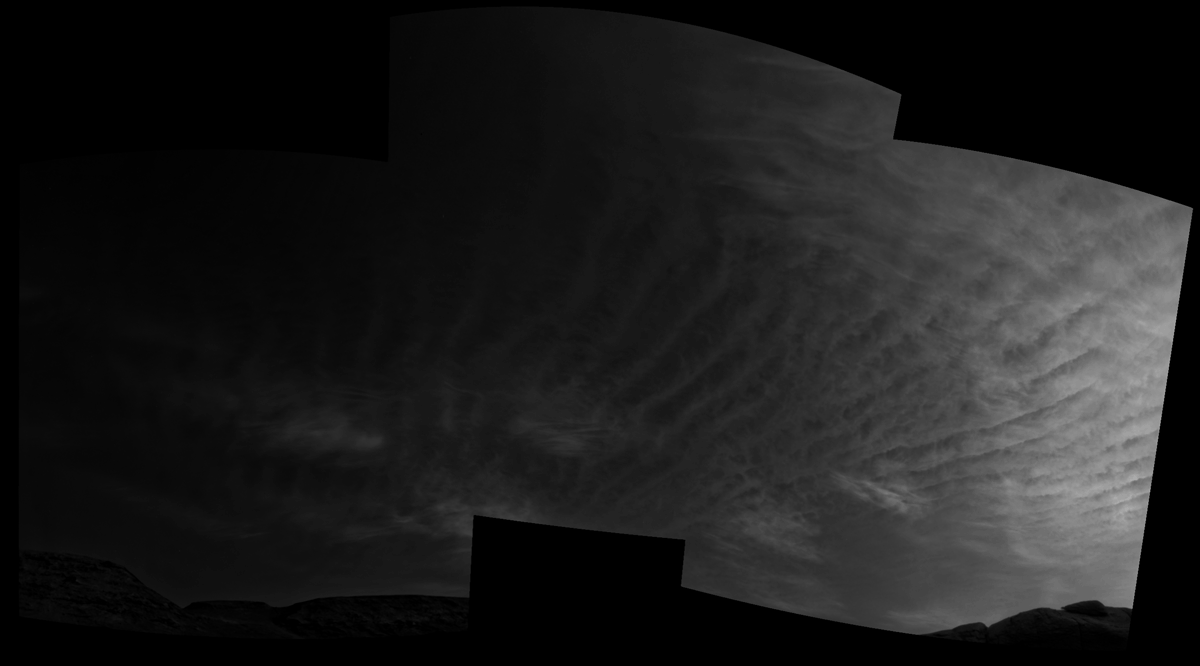
“I always marvel at the colors that show up: reds and greens and blues and purples,” Mark Lemmon, an atmospheric scientist with the Space Science Institute in Colorado, said in a NASA statement. “It’s really cool to see something shining with lots of color on Mars.”
The fine, rippling structures of these clouds are easier to see with images from Curiosity’s black-and-white navigation cameras. But it’s the color images from the rover’s Mast Camera, or Mastcam, that really shine – literally. Viewed just after sunset, their ice crystals catch the fading light, causing them to appear to glow against the darkening sky. These twilight clouds, also known as “noctilucent” (Latin for “night shining”) clouds, grow brighter as they fill with crystals, then darken after the Sun’s position in the sky drops below their altitude. This is just one useful clue scientists use to determine how high they are.
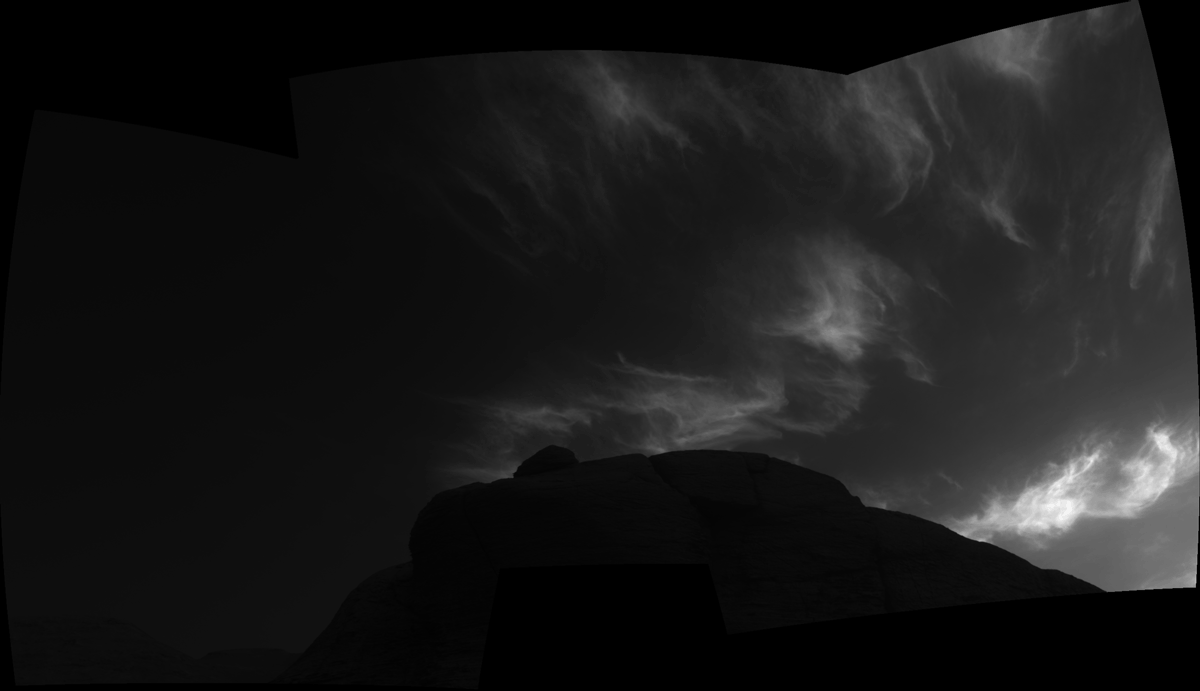
Even more stunning are iridescent, or “mother of pearl” clouds. “If you see a cloud with a shimmery pastel set of colors in it, that’s because the cloud particles are all nearly identical in size,” said Mark Lemmon, an atmospheric scientist with the Space Science Institute in Boulder, Colorado. “That’s usually happening just after the clouds have formed and have all grown at the same rate.”

These clouds are among the more colourful things on the Red Planet, he added. If you were skygazing next to Curiosity, you could see the colors with the naked eye, although they’d be faint.
The clouds are at their prettiest just after sunset, when the last light makes the ice crystals glow, which is why scientists call them noctilucent, or night-shining. (Curiosity can monitor these noctilucent clouds with both its black-and-white navigation cameras and its color Mast Camera.)
Some of these clouds even appear a bit iridescent when the cloud particles are very similar sizes, Lemmon said, which typically happens when clouds have just formed and have grown at the same speed.

